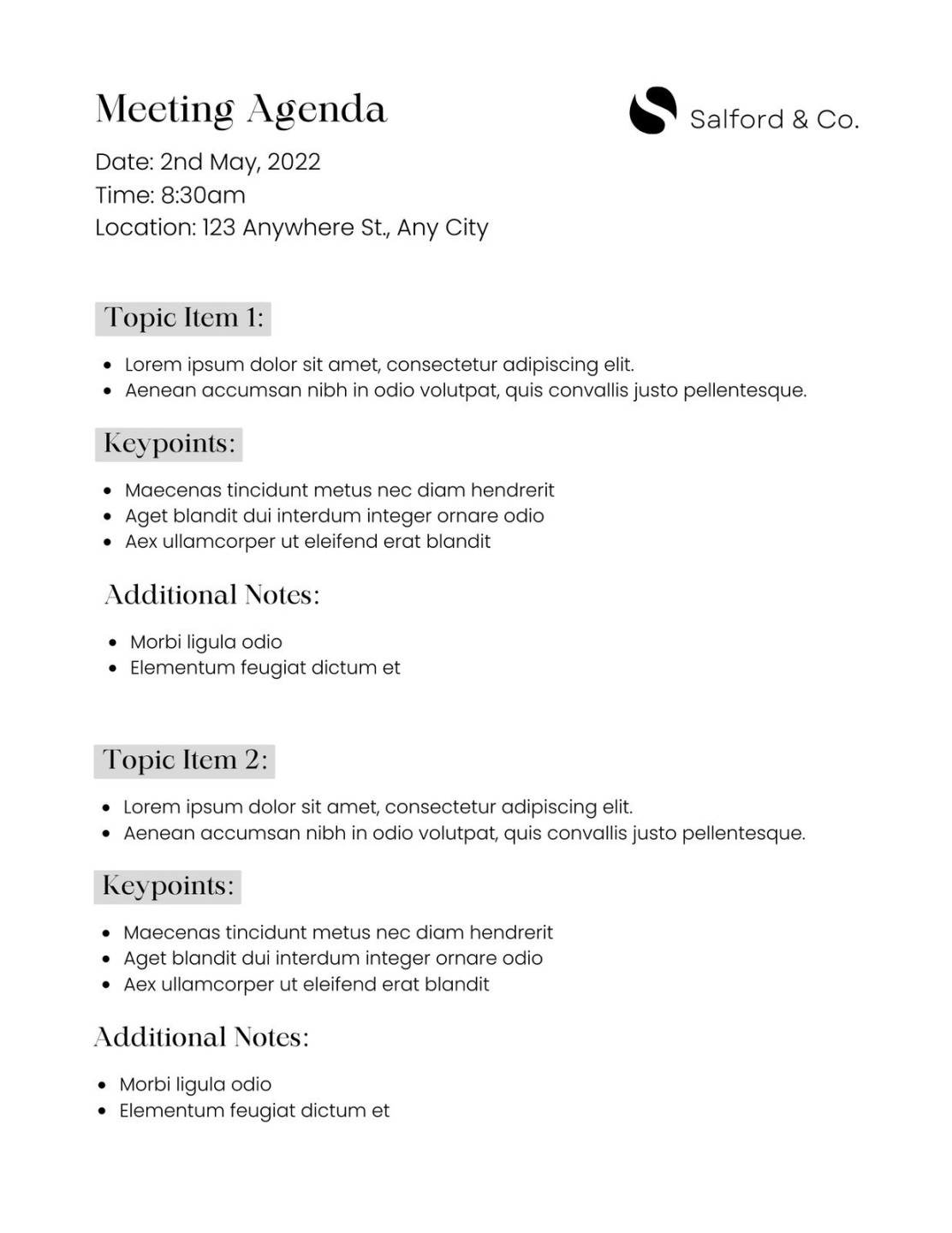Defining the Simple Agenda Template
A Simple Agenda Template serves as a foundational document for meetings, outlining the topics to be discussed and the order in which they will be addressed. While its simplicity belies its importance, a well-crafted agenda can significantly enhance the efficiency and productivity of any gathering.

Key Design Elements for a Professional Template
1. Clarity and Conciseness: The primary objective of an agenda is to provide a clear overview of the meeting’s purpose. Avoid excessive detail or jargon that might confuse or distract attendees. Use concise language and bullet points to present information in a digestible format.
2. Consistent Formatting: A visually appealing and consistent format fosters professionalism and enhances readability. Employ a clear font, such as Arial or Times New Roman, and maintain consistent spacing between elements. Consider using a header and footer to provide essential information like the meeting title, date, time, and location.
3. Logical Sequence: Organize the agenda items in a logical order that facilitates a smooth flow of discussion. Begin with introductory matters, followed by substantive topics, and conclude with administrative or action items. This sequence helps participants anticipate the meeting’s progression and ensures that all key issues are addressed.
4. Time Allocation: If possible, indicate the estimated time for each agenda item. This helps manage the meeting’s pace and prevents any single topic from dominating the discussion. While flexibility is essential, having a general timeline can keep participants focused and on track.
5. Action Items: Clearly designate specific action items that arise during the meeting. Assign responsibilities and due dates to ensure accountability and follow-up. This practice helps translate discussions into concrete outcomes and prevents tasks from falling through the cracks.
6. Distribution: Distribute the agenda to all participants well in advance of the meeting. This allows them to prepare for discussions, ask questions, and potentially suggest modifications. Timely distribution ensures that everyone is on the same page and can contribute meaningfully to the proceedings.
Essential Sections of a Simple Agenda Template
Meeting Title: Clearly state the purpose or subject of the meeting.
Additional Considerations
Flexibility: While a well-structured agenda provides a roadmap, be prepared to adapt to unexpected circumstances. Allow time for questions, discussions, or unforeseen topics that may arise.
By incorporating these design elements and essential sections, you can create a Simple Agenda Template that effectively guides meetings, fosters productive discussions, and contributes to the overall success of your organization.